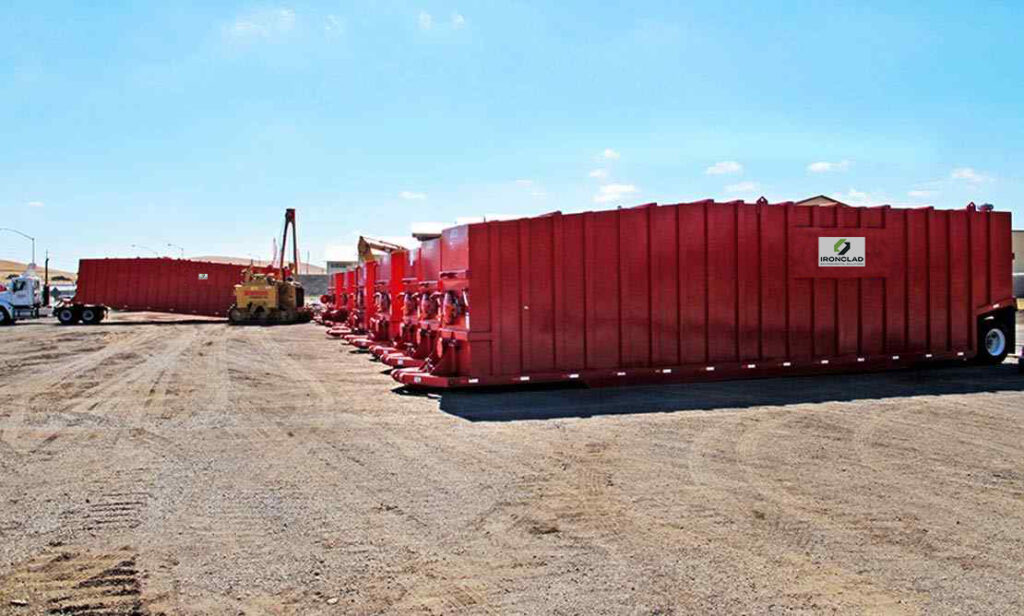Frac Tanks – An Efficient Way To Achieve Environment Remediations
Natural disasters like floods and accidents (chemical leaks, oil spills, or hazardous contamination) can threaten environmental safety and infrastructure. Environmental remediation processes help separate pollutants and contaminants from the environment, making things safer for humans and animals. Frac tanks are an essential part of the remediation process for containing contaminants and preventing them from further from polluting the environment.

There are four types of environmental remediation:
- Soil Remediation: Contaminants such as creosote, hydrocarbons, and heavy metals released due to improper waste disposal, industrial activity, and agricultural chemicals are primarily responsible for soil pollution. These contaminants, which lie on the surface, can harm humans, plants, and animals. Some soil remediation solutions include air sparging, encapsulation, and removing and replacing the contaminated soil with clean soil. Use of specific bacterium can help get rid of the problem naturally.
- Surface Water Remediation: Contaminated surface water is dangerous to humans and animals as they can easily come into contact with it. Stagnant water can also act as a breeding ground for harmful insects and bacteria. These pollutants can either be removed directly or converted into harmless or inert compounds using other methods.
- Groundwater Remediation: Groundwater remediation is more challenging than surface water remediation. Contaminants can leech into the ground and water table through leaking landfills, industrial spills, and farm and urban run-offs. Groundwater contamination can carry throughout the underground water system and severely harm animals, humans, and plants with long-term consequences. Groundwater remediation solutions include chemical, physical, and biological treatment methods.
- Sediment Remediation: According to the Environmental Protection Agency (EPA), sediment is a combination of water and soil, sand, and organic matter that ends up at the bottom of a body of water. Sediment contamination is caused by soil and water contamination. Remediation methods are a combination of those used for soil and water. Some of the common sediment remediation methods include excavation, in-situ-capping, dredging, and monitored natural recovery.
Role of Frac Tanks in Environmental Remediation
In environmental remediation, the removal and treatment of contaminants is crucial. This is where frac tanks for contaminated sites come in handy.
Remediation storage tanks prevent the contaminants from polluting the environment by containing the waste generated by industrial production, fracking operations, and other activities in leak-proof containers. These environmental remediation tanks are easy to set up and can also be used to isolate the pollutants before they seep into the environment.
Contamination remedial tanks are used for a range of environmental remedial applications such as:
- Septic Pumping: Frac tanks are ideal liquid storage solutions for environmental remediation. They serve as portable wastewater storage and can be placed next to the septic pumping operation where the wastewater can be directly pumped into the tank from the vacuum truck. An epoxy lined interior prevents the tanks from deteriorating due to chemicals in the wastewater. A tank with a capacity of 21,000 gallons can hold 4-7 vacuum truckloads for later disposal.
- Sludge Dewatering: Weir tanks are used for sludge dewatering. Equipped with different compartments, including a settling tank (called a sand trap), these tanks are ideal for easy sludge transportation for filtration or disposal. The tanks are designed to separate the sludge from liquids. Some weir tanks have a ‘V’ shaped floor for easier drainage of the stored liquid.
- Temporary Chemical Storage: Frac tanks can be used to temporarily store compatible chemicals during cleaning operations in refineries. They can be parked next to the process equipment that is to be cleaned. When completed, the contents of the frac tank may be easily transported for disposal.
- Water Remediation: Frac tanks offer the most economical portable storage for water remediation. The contaminated water can be temporarily stored in the frac tank by directly pumping it into the tank. After the operation, the contents of the tanks can be easily treated onsite or transported off site for further filtration or disposal. Double-wall frac tanks offer an additional layer of protection against leaking and are ideal for containing contaminated liquids near environmentally sensitive areas such as marine environments and areas with stringent regulatory requirements.
- Environmental Cleanup: Frac tanks can be used to contain dirty water during environmental cleanup. Open top frac tanks facilitate easy access to check fluid levels. Some tanks have many ways that significantly ease access for tank-cleanup.
Frac tank rentals offer a quick, efficient, cost-effective way to achieve environmental remediation. The safe and leak-proof temporary storage that they provide is ideal for projects ranging from groundwater remediation to hazardous waste temporary containment.
Ironclad Environmental Solutions is one of the leading providers of frac and weir tanks rentals for environmental remediation. We have successfully delivered tanks for remediation projects including sediment suspension and coal slurry containment, energy plants for liquid storage, and containment and water storage and sediment separation.
To find out more about our fleet of environmental remediation products, request a quote today.